Table of Contents
ToggleThe various photoelectric transducers that convert light energy into electrical energy are
- Photoemissive transducer,
- Photovoltaic transducer,
- Photoconductive transducer.
Photoemissive Transducers
- The properties of a photoemissive cell or phototube are used in photoelectric transducers.
- The vacuum photoelectric cell consists of a curved sheet of thin metal with its concave surface coated with a photoemissive material, which forms the cathode, and the rod anode mounted at the centre of curvature of the cathode.
- The whole assembly is mounted in an evacuated glass envelope as shown in following figure. The material, coated cathode, emits electrons when light radiation strikes them.
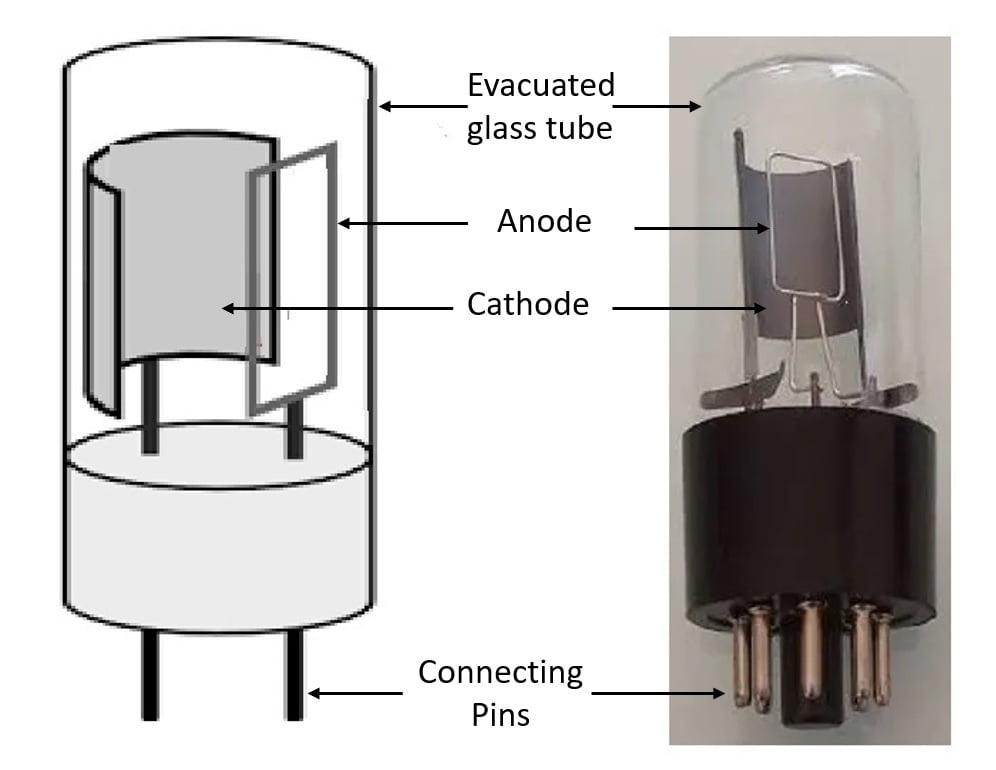
Circuit symbol for Phototube (Photoemissive cell) is shown in figure 7(a).
- When the radiation of light fall on cathode plates the electrons starts flowing from cathode to anode. The anode is kept to the positive potential. Thus, the photoelectric current starts flowing through the anode.
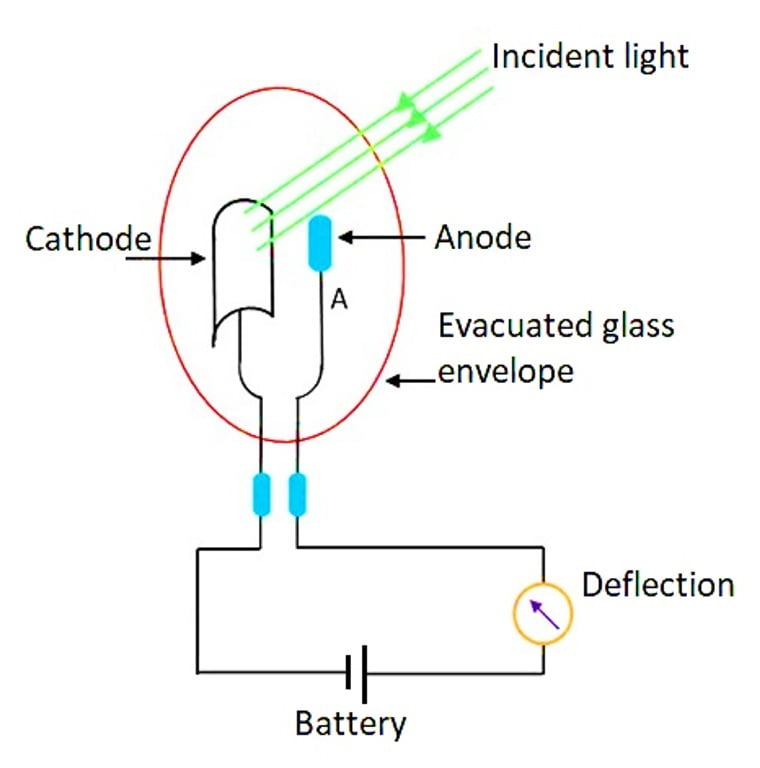
- The magnitude of the current is directly proportional to the intensity of light passes through it.
- The emitted electrons from the cathode are collected by a positive electrode (anode) forming an electric current.
- Figure 3 shows the current versus voltage characteristics of a typical highly evacuated phototube.

- It is found from the curve that for the voltage above approximately 20 V, the output is nearly independent of the applied anode voltage but entirely depends upon the amount of incident light (denoted by its wavelength in Figure 3).
- The current through the phototube produced as a result of incident light is very small. This current is the output of the photo-electric transducers. As the current is in the order of some few μA, it must be amplified to provide a usable output.
Photoconductive Cell
- A photoconductive means a resistor whose electrical resistance is affected by the incident light. Their operations are based on the photoeffect that was discovered by Albert Einstein.
- The photoconductive cell converts the light energy into an electric current.
- The most common materials for its fabrication are cadmium sulfide (CdS) and cadmium selenide (CdSe) that are semiconductors whose resistances change upon light entering the surface.

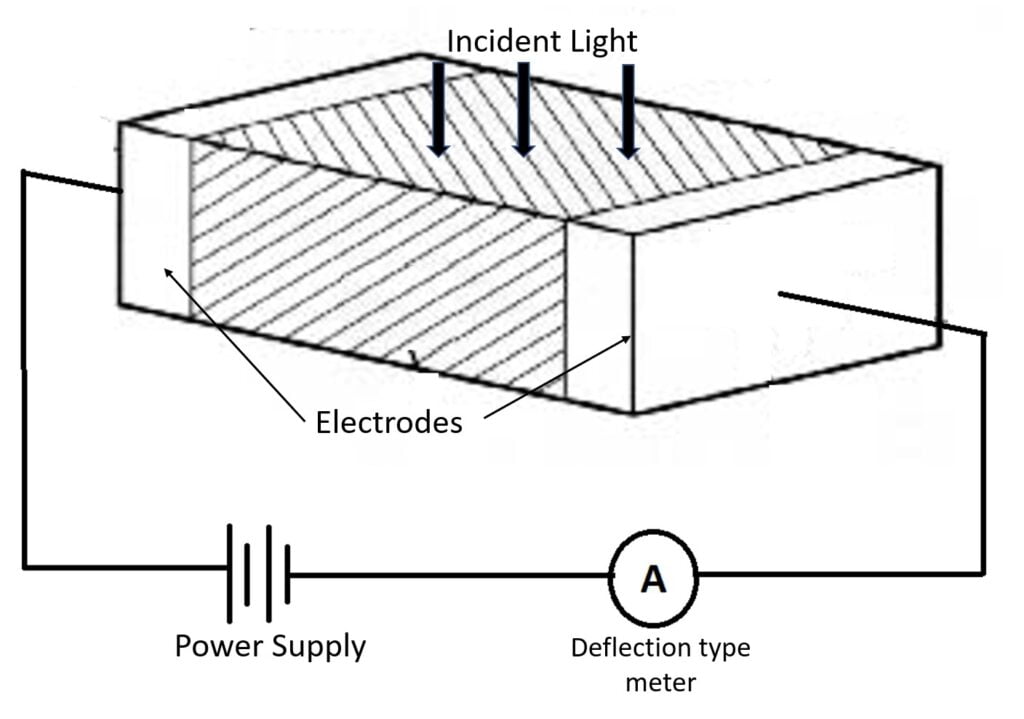
- When the beam of light falls on the semiconductor material, their conductivity increases and the material works like a closed switch. The current starts flowing into the material and deflects the pointer of the meter.
- Circuit symbol for photoresistor or Light Dependent Resistor (LDR) is shown in figure 7(b).
Advantages of Photoconductive Transducer
- The photoconductive cell made up of cadmium sulfoselenide can be used in the infrared region.
- They can be operated using low voltages.
Disadvantages of Photoconductive Transducer
- The resistance varies due to the change in temperature for particular light intensity.
- They cannot be used for analog applications.
Applications of Photoconductive Transducer
- They are effectively used in relay control circuits, burglar alarms, and light-controlled switches.
- They are used to measure the attenuation of light.
- In industrial control equipment to count the number of packages moving on conveyor belts etc.
Photovoltaic transducer or Photocell
- When we say photovoltaic we mean the sensor that generates the output electric voltage in response to light. The photovoltaic cell is the type of active transducer.
- Photocells are similar to photosensors except that a photocell is used as an electricity source rather than a sensor of radiation. It is popularly known as solar cell.
- Solar cells, which are more effective in sunlight, are commonly available. A typical photocell is a semiconductor junction element made of a material such as single-crystal silicon, polycrystalline silicon, and cadmium sulfide.
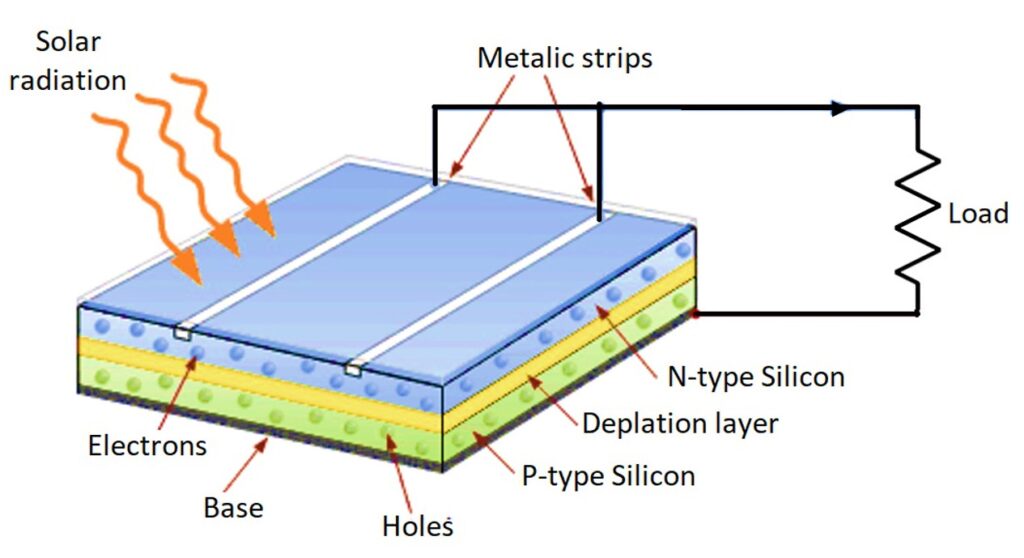
- When the semiconductor material absorbs heat, the free electrons of the material start moving. This phenomenon is known as the photovoltaic effect.
- The movements of electrons develop the current in the cell, and the current is known as the photoelectric current.
Cell arrays are used in moderate-power applications. Typical power output is 10 mW/cm2 of surface area, with a potential of about 1.0 V.
The circuit symbol of a photocell is given in Figure 7(c).
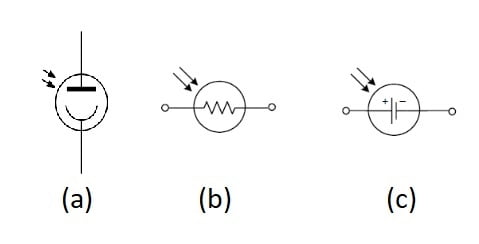
Advantages of Photovoltaic Transducer
- They generate voltage without using any form of external source.
- They have a fast response.
Applications of Photovoltaic Transducer
- They can be used as energy converters.
- Used in space crafts, data processing industries, switching and trigger circuits, earth-based applications.
- Cells with gold doped germanium material can be used as infrared detectors.
Recent posts
Related posts:
- Industrial Computerized Tomography
- Measurement of Vibration
- Electrical Telemetry | Telemetry System
- Non-Destructive Thickness Measurement
- Humidity Measurement
- Smoke and Fire Detection | Heat and Smoke Detectors
- Thermal Conductivity Measurement
- Piezoelectric Transducer
- Signal Conditioning
- Transducer and Its Classification
- Selection Criteria of Transducer
- Strain Gauge
- LVDT Linear Variable Differential Transformer
- Hall Effect Transducer
- Light Sensors or Photosensors
- Resistance Temperature Detectors or Resistance thermometer
- Thermocouple
- Sensors and Transducers
- Thermistors
- X-Y Recorder or XY Plotter
- Voltage and Current Telemetry System

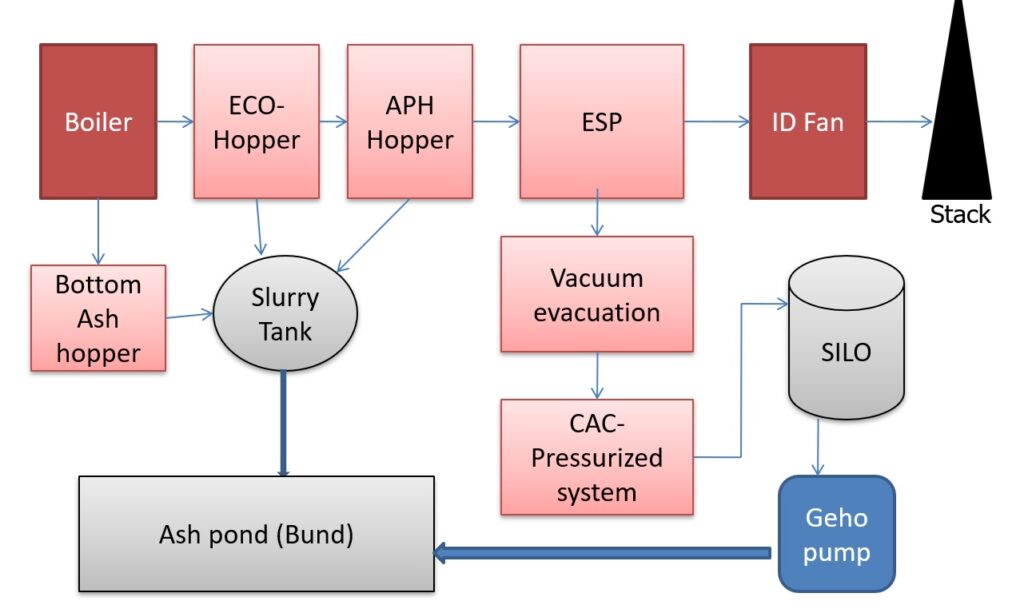
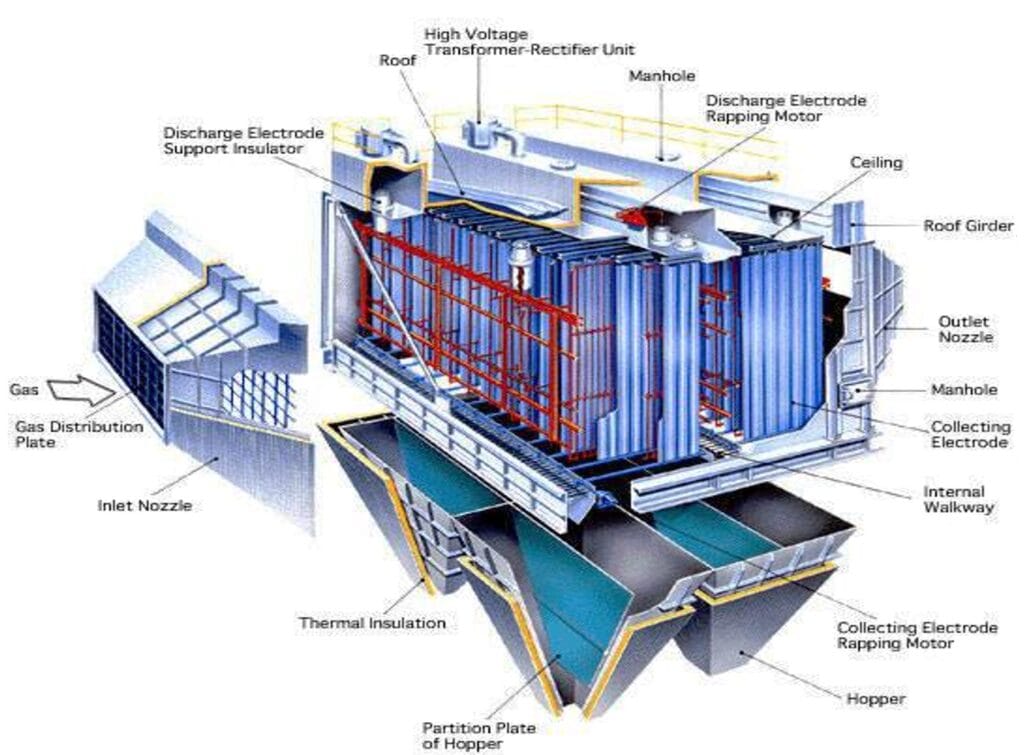
Hello electronicsforyou.in owner, Keep up the good work!
Hello electronicsforyou.in webmaster, Your posts are always well-supported by research and data.